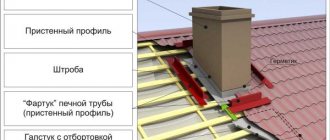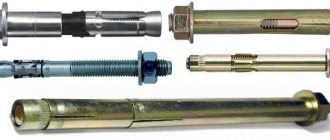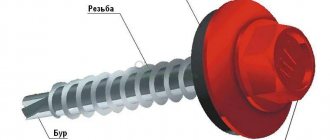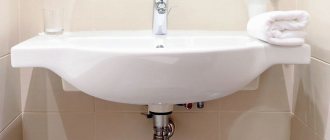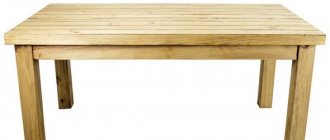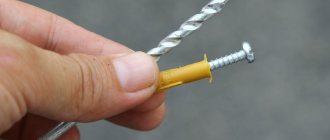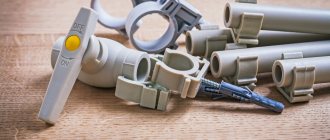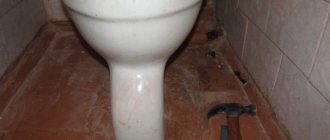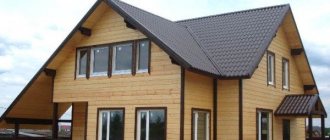Requirements for fasteners for corrugated sheets
Galvanized roofing screws belong to the premium category.
Installation of screws for corrugated sheets is carried out without preparing holes. Therefore, a number of requirements :
- The presence of a tip that easily penetrates metal.
- The material of manufacture is galvanized steel, which can withstand prolonged contact with water without oxidation.
- The presence of latex sealant , rubber or neoprene to seal the hole.
- The dimensions of the fasteners are selected to be 2 mm larger than the sheathing timber and roofing metal sheet.
- The length of the elements is 19-250 mm with a diameter of 4.8-6.3 mm.
- Screws for fixing the ridge profile – 4.8x60 mm.
- Manufacturers paint the heads of self-tapping screws in the color of the roofing to visually hide the fastening points.
Fasteners made of galvanized steel belong to the premium group. The consumption of screws per 1 m² of sheet is 9-10 pieces. For end mounting, you will need ~2 times more screws.
Design features of self-tapping screws: press washer with drill
A press washer is a special form of fastener head in the form of a small washer that has an increased area. This ensures maximum clamping force when fastening sheet materials. When using self-tapping screws with a press washer, there is no need to use additional gaskets, which can be washers. This head shape is the optimal solution for structures where the attached element has a less durable structure. Otherwise, the self-tapping screw may “fall” into loose material when screwing in, or during operation, the space around the formed hole may become unusable, and therefore the reliability of the fastening itself.
The press washer allows you to distribute the load over a large area under the head or not be “recessed” into the attached element.
Metal fasteners have a small inter-ridge distance or, in other words, a frequent thread. Metal is the densest material widely used in construction. When screwing a self-tapping screw into various profiles or metal sheets, it is necessary to secure the hardware, which is achieved through small (frequent) steps. There is no fear that the self-tapping screw will “grind” the metal into which it is screwed. On the contrary, the pitch of a self-tapping screw with a wide thread may be greater than the material itself to which the structure is attached.
The thread on the PSh self-tapping screw is double-start, that is, cut in the form of two separate turns, running at equal distances from one another.
The drill allows you to screw hardware into a steel sheet without pre-drilling. As a result, a high-quality, reliable connection when working with elements up to 2 mm thick without the use of a drill.
The structure of the self-tapping screw with a press washer with a drill is strong enough to withstand high loads.
Technical specifications
The number of self-tapping screws for corrugated sheets depends on the purpose of installation. Metal sheets are used for roofing, facades, fences and finished structures. Depending on the frame, the number and type of screw will vary.
Characteristics
is used as materials for the manufacture of self-tapping screws for corrugated sheets . To fasten the decking, galvanized screws with a coating thickness of 12.5 microns are used. When carrying out interior work, it is recommended to use black fasteners that are resistant to corrosion.
General characteristics of hardware :
- metal size – 13-150 mm, ѳ 4.2-6.3 mm;
- wood length – 29-80 mm, ѳ 3.5-4.8 mm;
- roofing type – ѳ 4.8 mm;
- weight – 4-50 kg/1000 pcs.;
- tensile strength 100-150 kg.
Features of self-tapping screws for corrugated sheets :
- Drill size – 2-point tip, used for fastening metal up to 2 mm. In other cases, the parameter is 3.35-4.2 mm.
- Types of heads - semicircular, cylindrical, spherical. Equipped with splines in the form of stars, crosses or straight lines.
- Thread – thickness up to 0.5 mm, which is taken into account in the thread pitch for metal fasteners. For wooden surfaces the parameter increases.
- The steel grade corresponds to GOST 1435-99. For wood screws, steel U7 or U7A is used, for metal - U12 or U13.
Valera
The voice of the construction guru
Ask a Question
To ensure reliable fixation with fasteners for corrugated sheets, it is necessary to select the correct screws. There must be a special marking on the screw head. The thickness of the gasket must be at least 2 mm.
Please note: zinc coating helps protect the fastening site from metal corrosion, so fasteners should not be made of a cheap non-ferrous alloy. This layer prevents rust.
Calculation of the number of screws
To attach corrugated sheets to metal, it is recommended to choose hardware with a diameter of 5.5 or 6.3 mm . The calculation of the number of fasteners depends on the method of installing the profiled sheet.
Number of self- tapping :
- To attach the decking to the fence frame, you will need 10-15 pieces per sheet 1.1 m wide. For horizontal beams in the cells between the supports, use 6 self-tapping screws per support.
- The outer elements are installed at the fastening points of two sheets - from 8 to 12 pieces are needed per panel.
The number of profiled sheets calculated using the formula: divide the length of the fence by the width of the material without overlap. Based on the standard sheet size of 118 cm, the length will be 110 cm. The number of support posts depends on the height of the fence.
Valera
The voice of the construction guru
Ask a Question
The optimal number of screws depends on the climate in the region, the height of the structure and the angle of inclination. Often installers deviate from the recommended parameters, installing a larger number of hardware.
How are sheets of metal fastened?
When fastening sheet metal, it is important to choose the right type of screws. Most often, self-tapping screws with a press washer are used to perform such work. These products screw easily into sheets of steel, aluminum and copper, and their wide head ensures a secure fit. Manufacturers produce self-tapping screws with a sharp end and a drill-shaped tip. The first type is used for joining sheets up to 0.9 mm thick without pre-drilling. The purpose of hardware with a drill is to connect sheets up to 2 mm, as well as fastening sheets to a rolled steel frame. The head of these screws has a hemispherical head with a Phillips slot Ph2 and a press washer obtained by stamping.
In addition, on sale you can find pointed screws with a cylindrical head and a straight slot with a sharp end or drill (DIN 7976), as well as fasteners with a hex head without a slot (DIN 7504-K). Self-tapping screws with hexagonal heads are used with special attachments for a screwdriver, which make it possible to apply a large torque to the product without the risk of damaging the hardware. In this regard, such products are often purchased for working with sheet metal up to 5 mm thick. This fastener is also available with a countersunk and semi-countersunk head. All screws included in the subgroups of the DIN 7504-K standard differ only in the shape of the head. The rest of their parameters - cross slot, drill tip and frequent thread - are common. As for the choice of material, the construction market offers products made of carbon steel with a zinc or phosphate coating, as well as screws with drills made of hard, corrosion-resistant alloys.
To work on fastening steel sheets, self-tapping screws with a length of 19 to 250 mm and a diameter of 4.8 to 6.3 mm are used. The length is selected depending on the characteristics of the specific design. For example, if we are talking about a roof, then the length of the screw should be 3 mm greater than the total thickness of the sheet, insulating layers and sheathing. If the metal is attached to the roof ridge, then screws with a length of 80 mm and above are used.
Mounting order
Manufacturers of self-tapping screws for attaching corrugated sheets note that hardware is capable of independently stitching material up to 2 mm thick. If the corrugated sheet is 4-5 mm, before work it is necessary to make markings and pre-drill holes.
List of tools
Tool set
It is recommended to purchase corrugated sheets of the same length up to 12 mm . The thickness of the material and the height of the wave depend on the design features. The number of sheets is rounded up, since laying is carried out with an overlap horizontally of 8 cm and vertically of 20 cm.
The selection of metal screws for corrugated sheeting depends on the material of the sheathing - wood or metal. To carry out the work you will need :
- screwdriver with an attachment for hexagonal heads;
- wrench;
- roulette;
- pencil;
- instruments for working on metal;
- building level;
- cord.
The use of an angle grinder is relevant for budget material. After installing low-quality sheets, all surfaces must be painted.
Stages of work
Places for fastening sheets on the roof
The process of attaching corrugated sheets to the frame:
- Alignment of the lower edge of the material is carried out by tensioning the cord.
- Start fastening from the edge of the bottom sheet on either side of the structure.
- If the coating area is large, use the overlap method with mandatory fixation of the area where the plates are applied. Additionally, install self-tapping screws along the edges, and then align the sheets.
- The subsequent introduction of hardware is carried out at each lower point of the wave along the entire length and through the wave vertically. Having completed this stage, screw in the screws in the remaining areas with a screwdriver. Insert fasteners strictly perpendicular to the surface.
- Proceed to installing the next block, overlapping it by 20-30 cm with the first. If the size of the sheathing is not enough, cut the sheets. Secure the connection point with metal screws, inserting into each wave.
- Treat the junction areas with sealant.
- Maintain a fastening spacing of 30 cm in relation to the additional elements.
If profiled sheets are used as roofing material, it is necessary to select hardware for the roof.
Nuances of fastening screws
The use of profiled sheets for roof covering requires imparting waterproofing properties and resistance to wind loads to the material. For this, special fasteners for corrugated sheets and a small frame pitch are used. The ridge is fixed with long screws .
If the material is selected for cladding the facade as insulation, the pitch of the lathing depends on the characteristics of the heat insulator. Often this parameter is from 0.5 to 1 meter. In most cases, the method of fixing along the wall is used to secure the sheets. It is allowed to use self-tapping screws with a press washer equipped with a rubberized gasket.
When installing a fence made of corrugated sheets, you need to take into account the wind loads on the structure. To ensure stability, the material is fixed to logs in each wave.
To give the fence a decorative look, it is recommended to use colored screws. For example, if the sheets have the texture of oak, screws in brown or gold shades are suitable. In this case, for installation it is allowed to use hardware with a press washer and gasket.
How to choose a suitable screw for metal
Unlike other screws and bolts that require threaded holes, self-tapping screws create their own. There are three main types of self-tapping screws:
- Pointed self-tapping screws are the most common threaded screws. They have a pointed end to penetrate thin material. For example, in sheet metal. And also in soft materials such as wood and drywall. In thicker material they usually require a hole to start from.
- Thread-forming and tapping screws create reusable threads in metals and plastics. They require a drilled or punched hole to install. Thread-forming screws press threads into the material for a tight, vibration-resistant assembly. Tapping screws, on the other hand, require less torque and cause less stress on the material.
- Self-drilling screws save time and effort by drilling your own holes and creating reusable threads. Therefore, the material is secured in one operation.
The following types of metal screws are made from stainless steel:
- 316 is the most corrosion-resistant stainless steel. It has excellent resistance to chemicals and salt water, and can be weakly magnetic;
- 18-8 – has good chemical resistance and can be slightly magnetic;
- 410 is stronger and more durable than 316 and 18-8 stainless steel. It is mildly chemical resistant and magnetic, not suitable for use with aluminum.
The following can also be used as materials for the production of self-tapping screws:
- brass – corrosion resistant in humid environments, electrically conductive and non-magnetic;
- aluminum is three times lighter than steel. Aluminum is resistant to corrosion in humid environments and is non-magnetic;
- Steel – This general purpose metal is often coated with zinc to provide corrosion resistance in wet environments.
The zinc coating provides corrosion resistance in humid environments. Black oxide and phosphate guarantee high corrosion resistance in dry environments. Ultra-resistant black coating - more corrosion resistant than zinc. Provides a decorative finish that will not wear off.
Chrome plating is bright and attractive. Protects metal self-tapping screws from negative environmental influences. Nickel plating is a decorative finish that is more resistant to corrosion than zinc plating and less expensive than chrome plating. The ultra-resistant coating resists corrosion better than zinc coating. Also minimizes reactions between dissimilar metals.
Self-tapping screws
Self-tapping screw tips come in different shapes:
- pointed (like a pencil);
- stupid;
- flat.
They can be thread-forming, thread-cutting or thread-rolling. If the screw is pointed, it will tap and create threads in the pre-drilled hole. If the tip is flat, then this is extruding the thread and creating zero clearance between the screw and the material.
The most important difference between self-tapping and self-drilling screws is this. The former cannot pass through metal without a pilot hole, which must be pre-drilled or punched. The exact size of the drill hole is also important. The screw will become loose and will not cut correctly and securely if the pilot hole is too large. If it is too small, the screw may break or cause the material to split or crack.
Self-drilling screws
They can be easily distinguished by looking at the tip, which curves smoothly at the end and is shaped like a twist drill. The length of the screws varies, but the drilling points are standardized, identified by a number (1 to 5) that determines their length and thickness. Head and drive types vary. Self-drilling screws are most often:
- cruciform;
- hexagonal;
- square.
Unlike self-tapping screws, self-drilling screws do not require a pilot hole for cutting and fastening. They can drill, tap and fasten in one go, saving the extra step of drilling and then fastening.
Self-tapping screws for fastening wood to metal with a Flugel drill
Screws with a special drill bit provide reliable fastening of wood to metal with high holding force, without the need for pre-drilling. The drill bit and flute are designed to effectively remove material and properly size the hole for self-tapping.
Special wings widen the hole in the wood to prevent the threads from snagging while drilling. Flugel screws are ideal for fastening:
- roof/subfloor decking;
- trailer beds to the frame;
- wooden collectors to a steel frame.
Plywood-metal screws with drill bits are designed for fastening roofing and subflooring to a metal frame. Self-tapping screws with drill points are used to attach manifolds to metal frames and trailer decks to metal frames.
Self-tapping screws with EPDM gasket for roofing
Extremely durable fasteners are made from austenitic stainless steel with a hardened carbon steel drill bit. The drill is welded to a stainless steel shank. Such parts are characterized by very high reliability and durability. The hardened drill point allows the screw to drill into carbon steel profiles. The presence of lead threads formed on a hardened point allows threads to be cut correctly at high drilling speeds.
Where specified, they are assembled using a vulcanized stainless steel/EPDM sealing washer. A safe seal is ensured. These fasteners are coated with zinc for aesthetic reasons and wax to lubricate the surface during installation.
Using self-tapping screws, sheet metal is quickly attached. The pieces are widely used for stitching together metal panels and side pieces on open roofs. Stainless steel screws are also used for:
- fastening metal profiles;
- profiled metal sheets;
- insulated metal panels;
- solar installation systems;
- wind deflectors;
- parts directly to the steel roofing profiles.
Stainless steel self-tapping screws with EPDM gasket have excellent clamping characteristics. Asymmetrical threads are a great option for achieving high draw values. The point geometry ensures an almost complete absence of metal shavings. The pre-assembled vulcanized elastomer washer is designed for superior weather/UV resistance, optimal load transfer and reliable sealing.
